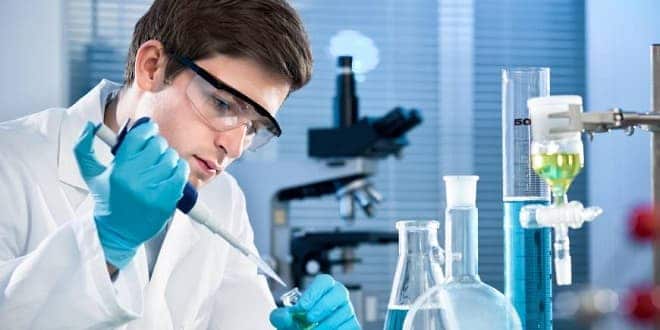Basic Food Chemistry ( Dr. M.A. IDOWU and Mrs. G.O. FETUGA )
COURSE CODE: FST 309 COURSE TITLE: BASIC FOOD CHEMISTRY COURSE UNIT: 3 UNITS COURSE LECTURERS: DR. M.A. IDOWU AND MRS. G.O. FETUGA LECTURE I – INTRODUCTION 1.0 HISTORICAL BACKGROUND – Accidental discoveries of processes and attempt to control man’s environment. – Passage of Food and Drug Act by the United States (U.S) congress (1906) catalysed by the study of food chemistry. – First official document of AOAC (Official methods of Analysis of the Association of Official Agricultural Chemists) in 1955. – Food Chemistry today. 1.1 DEFINITION OF FOOD CHEMISTRY – The study of composition of foods and of the reactions which lead to changes in their constitution and characteristics. 1.2 BENEFITS DERIVABLE FROM THE STUDY OF FOOD CHEMISTRY – Basic knowledge of the constituents of food. – Determination of appropriate processing and preservation method. – Aids understanding of microbiological reactions in food. – Information on chemical reactions involving food. – Useful information in New Food Product Development – Useful information to Engineers in design and fabrication of appropriate food processing equipment. – Help in choice of packaging material, equipment and technique. – Useful in storage stability and shelf life studies of food and food products. LECTURE 2 2.0 WATER IN FOODS – Water as basic constituent of ALL foods. 2.1 FORMS OF WATER IN FOOD – Free water/moisture
– Hydrates of water – Imbibes water – Adsorbed water 2.2 PROPERTIES OF WATER – Structure and Bonds in water H2O, covalent and H-bonds. – Some physical properties of water and ice. * Density * Vapour pressure * Refractive index * Viscosity * Specific heat * Heat of vapourization * Thermal conductivity * Dielectric constant * Coefficient of thermal expansion * Melting point * Boiling point. 2.3 WATER ACTIVITY – The concept of water activity relates the moisture (water) in a food to the RH of the air surrounding the food and is defined as ratio of the partial pressure of water in a food to the vapour pressure of water at the same temperature. a = p/p wherre P = vapour pressure of water in food w o P = vapour pressure of pure water at the same temperature o a = Water Activity. w OR aw can be defined as the ratio of the vapour pressure of water in a food to the saturated vapour pressure of water at the same temperature. i.e. P/P where P (pa) = Vapour pressure of water in food o Po = Vapour pressure of pure water at the same temperature. a = water activity w – for pure water a = 1.0 w – High m.c. amount of moisture > that of solids, aw ≤ 1.0 – Adsorption process
Dry product subjected to increasing moisture levels in the surrounding/Environment. – Desorption process Moist product gradually equilibrating with lower moisture levels of the surrounding/environment. – Hysteresis loop · Difference between abdorption and desorption isotherms. · It occurs because adsorption and desorption isotherms are more identical. 2.4 WATER ACTIVITY AND FOOD SPOILAGE – Moisture content and aw are important factors which affect ratio of spoilage of food in terms of chemical, biochemical and microbiological reaction. – for M.c 5- 15% – moist, dried foods (powdered) – Great storage stability – M.C. 20-40% – Intermediate moisture foods – less stable than dried foods. 2.4.1 Biochemical/Chemical Reactions Attached By a w – Most Enzymes are inactivated when a < 0.85 e.g. Amylases, peroxidases etc w – Lipases are still active at a 0.3 or less. w – Maillard reactions occur at a 0.6 – 0.7. w 2.4.2 Microbiological reactions – Bacterial growth – Impossible at a < 0.90 w – Molds and yeasts – Inhibited between a 0.88 – 0.80 w – Osmophilic yeasts can grow at aw of 0.65 LECTURE 3 3.0 PROTEINS – Complex organic substances present in all living matter (plants, animals and microorganisms). – ALL proteins, apart from consisting of C, H and O also contains N and sometimes may contain S as well as P.
3.1 AMINO ACID – Structural units of all proteins are amino acids. General formula RCN (NH ) 2 COOH. – There are 200 such amino acids. * Aliphatic monomerino monocarboxylic amino acids Gycine, Alanine, Valine, Lecicine, Isoleucine, Serine, Threonine and Proline. * Sulphure containing amino acids. Cycteine cystine & methionine. * Mono a,omp Dicarboxylic amino acids. Aspartic acid and colutamic acid. * Basic Amino acids. Lysine, Arginine and Histialine * Aromatic amino acids. Phenyl alanine, agrosine and Tryptophan * Derivatives of other amino acids 4 – Hydroproline and 5-Hydrolysine. 3.1.1 Properties of Amino acids – Optical Activity – Zwitterion formation (Electrostatically neutral form). – Isoelectic point –pH at which the amino acid consist of mainly Zwitterion e.g. for Glyes pHi = 5.97 3.2 CLASSIFICATION OF PROTEINS – can be based on solubility, coagulation or prosthesic groups. – Simple proteins proteins that will yield only amino acids on hydrolysis e.g. Asbamins, globalins, colutelins, protamines etc. – Complex proteins Proteins that contains non-protein entities attached to the polypeptide chain e.g. phospoproteins, Glycoproteins, Lipoproteins, Chromoproteins, Nucleoproteins etc. 3.2.1 Properties of Proteins – Amphoterism – Solubility – Colour Reactions e.g. Biuret reaction
…




